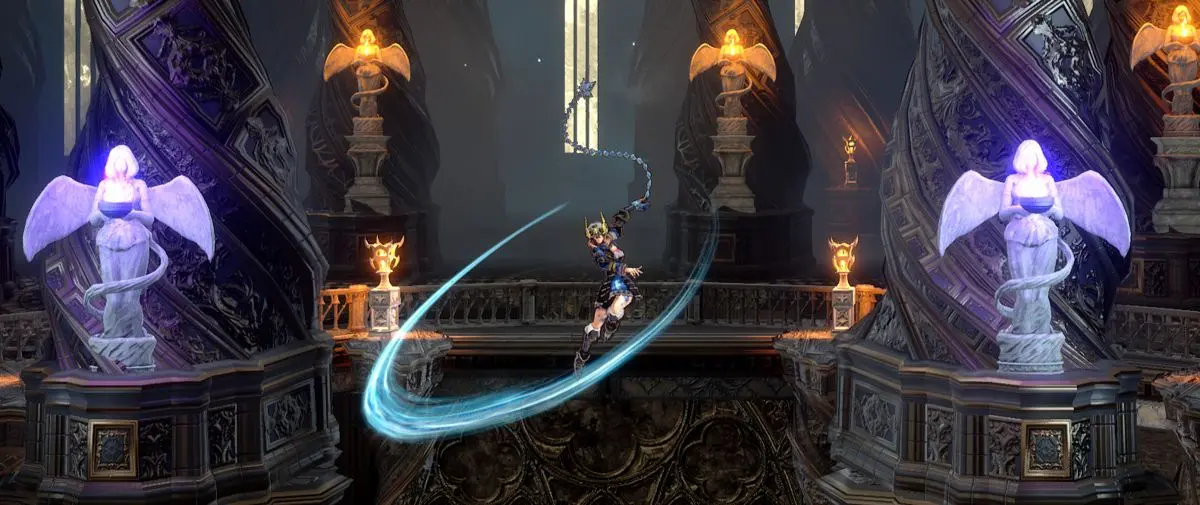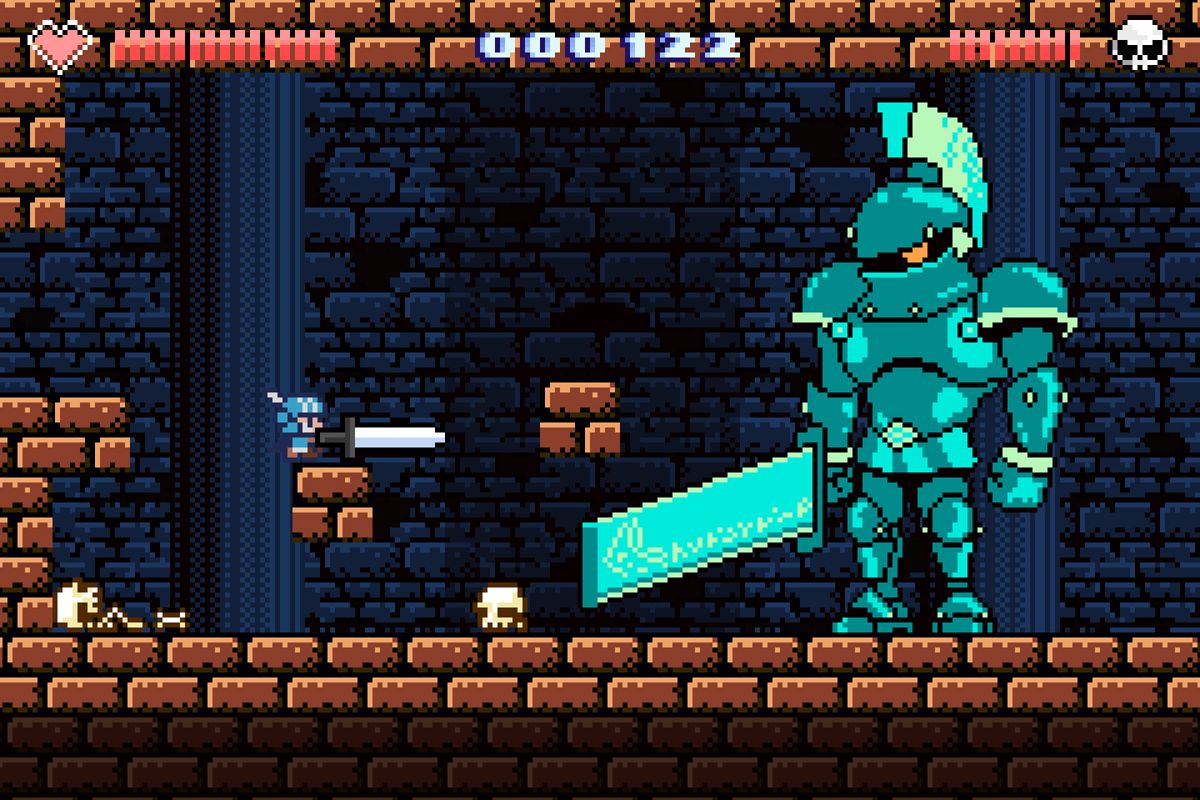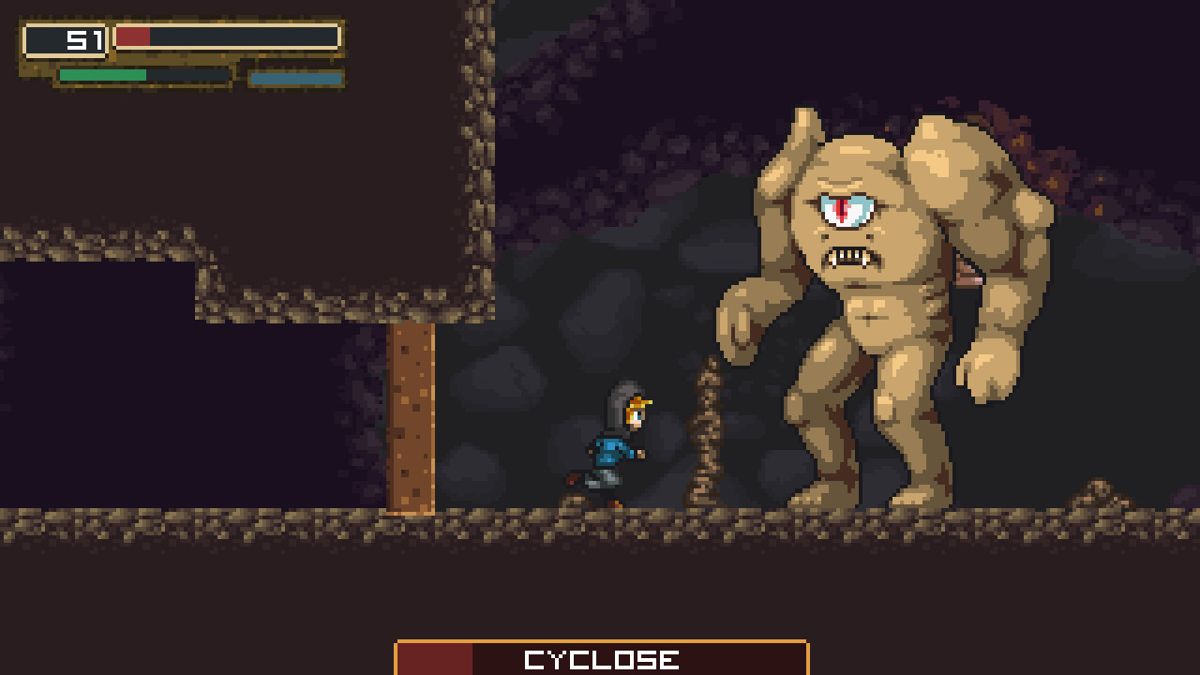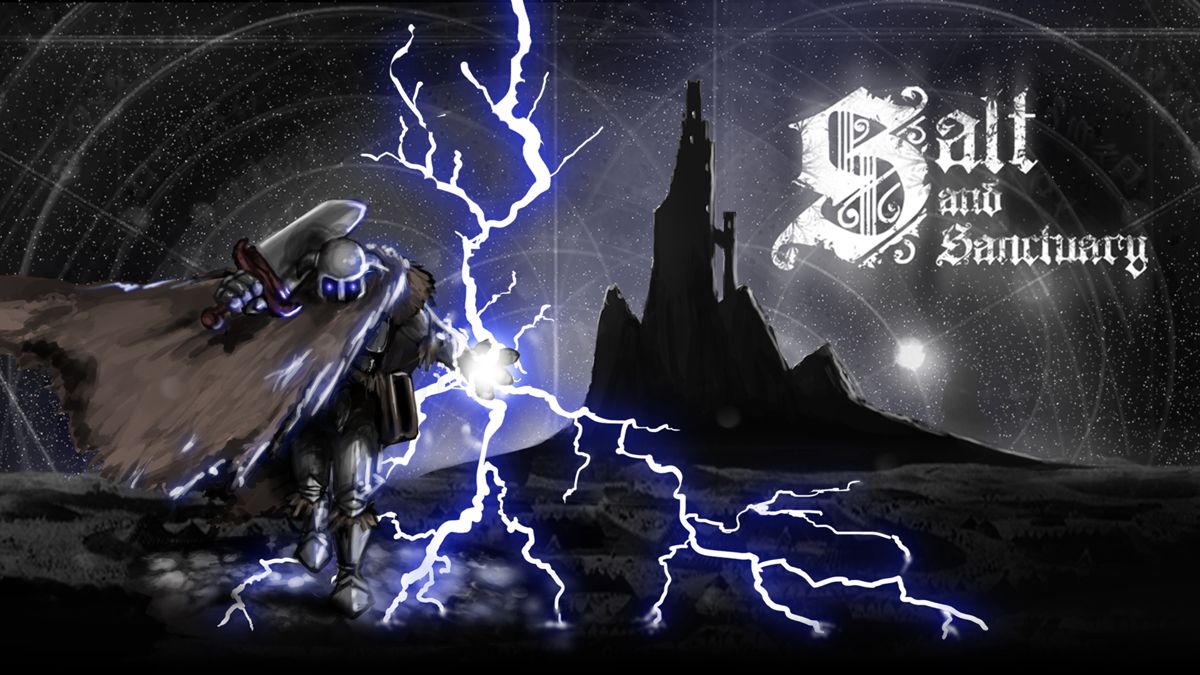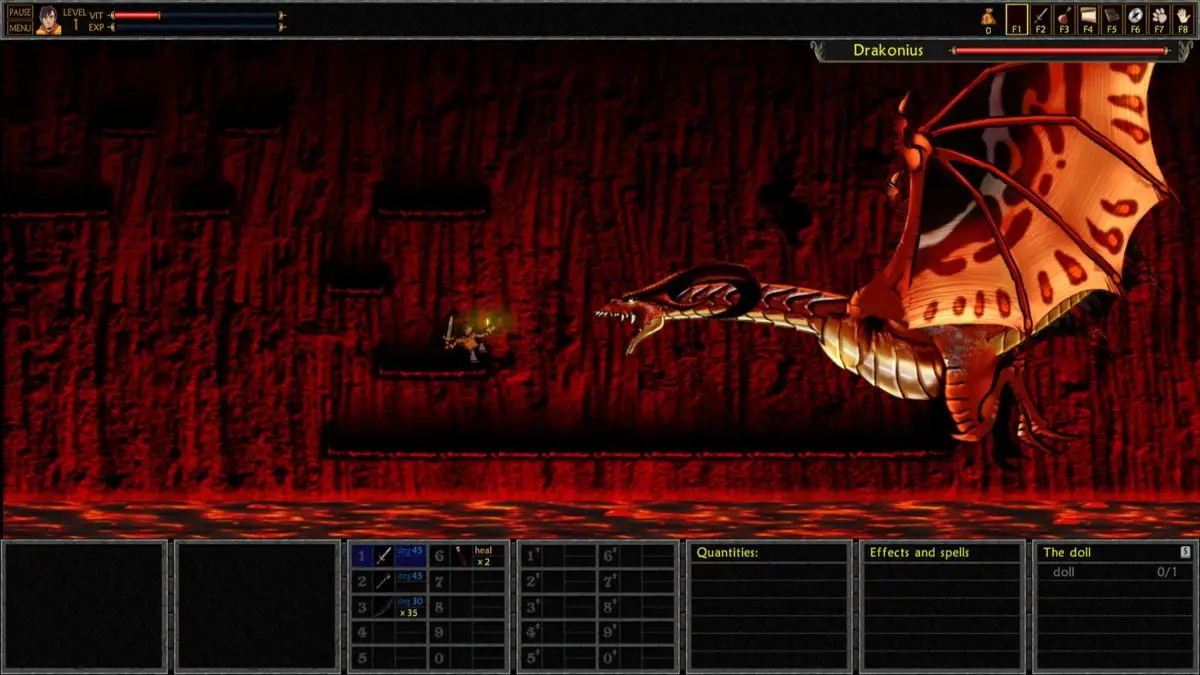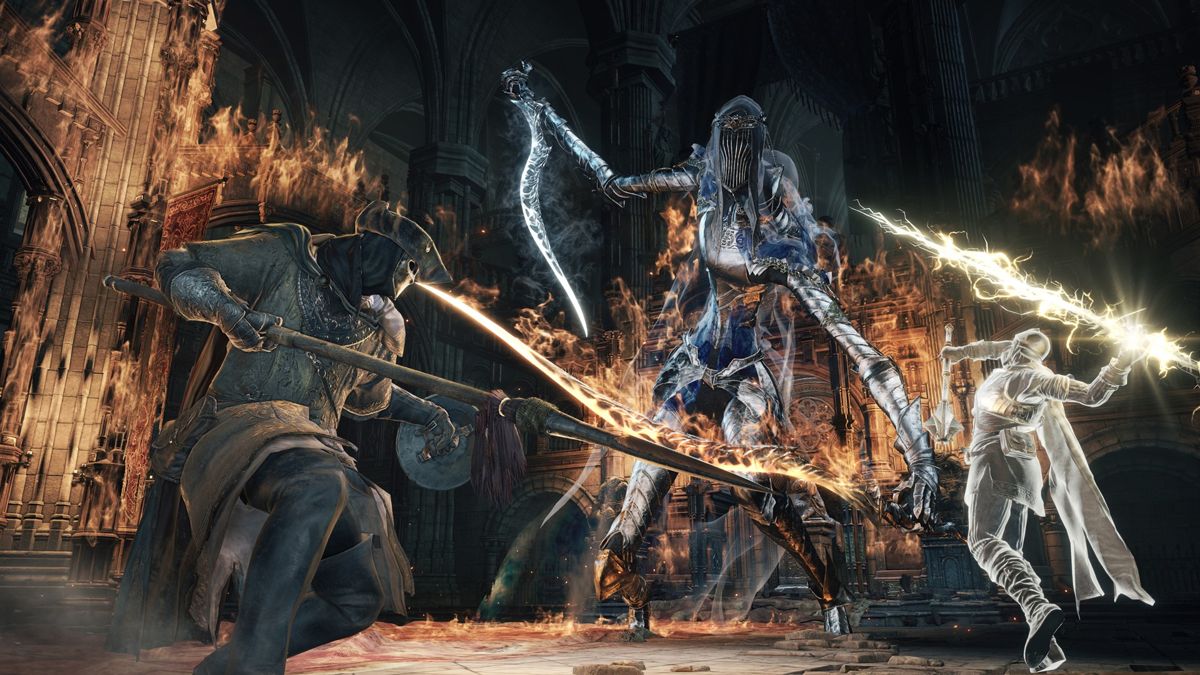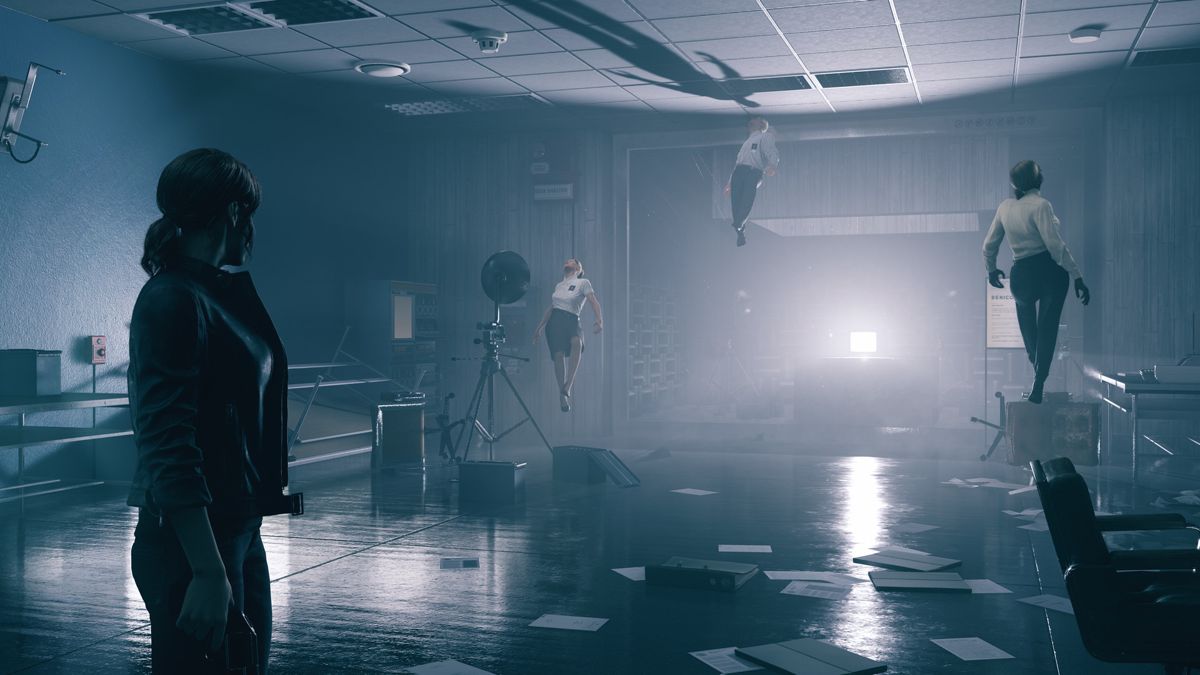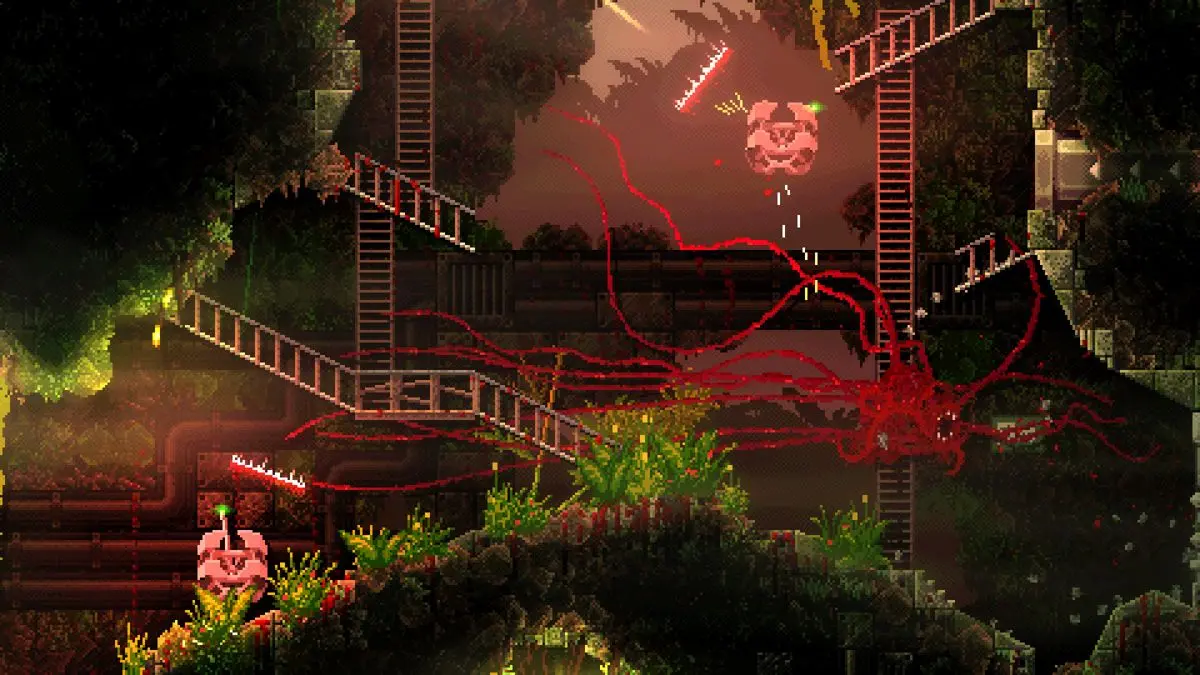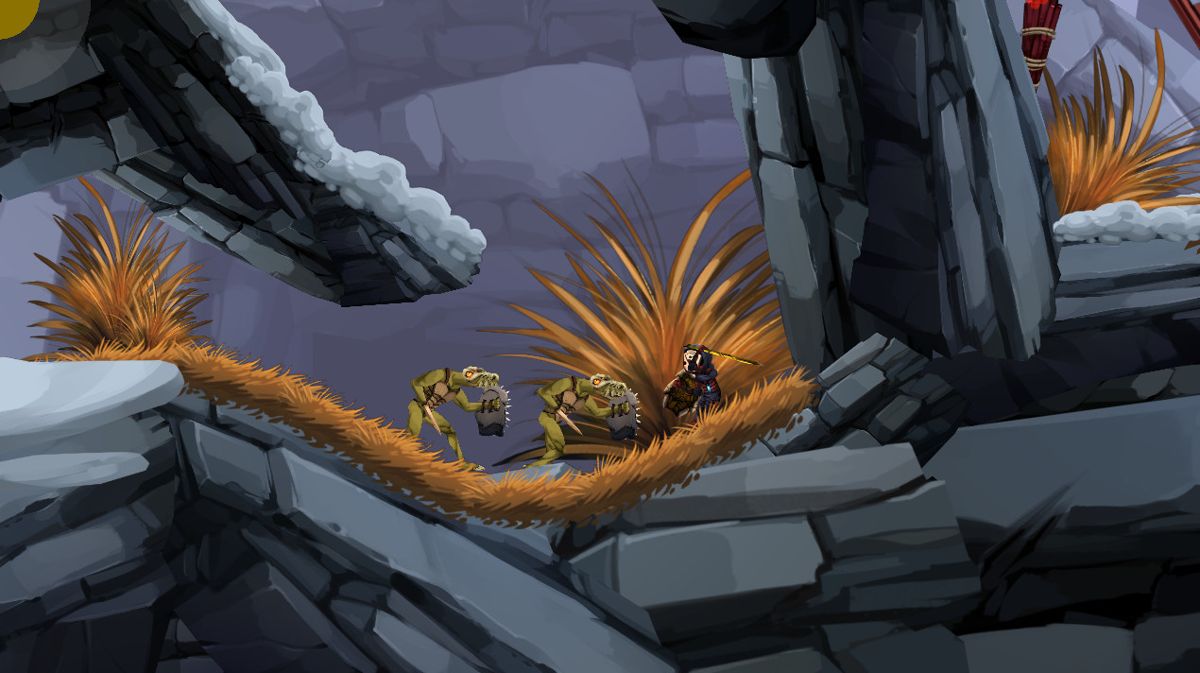Results
Bloodstained: Ritual of the Night
igavania, grindy, hidden areas
Bloodstained: Ritual of the Night is a critically acclaimed Metroidvania-style action-adventure game developed by Koji Igarashi, the godfather of the Igavania subgenre. Drawing inspiration from his work on the iconic Castlevania series, Igarashi has crafted a meticulously designed game that pays homage to the genre's roots while introducing fresh mechanics and elements. The game stands out for its intricate level design, featuring a vast and interconnected castle filled with labyrinthine passages, hidden rooms, and secret shortcuts. Exploration is rewarded with a wealth of power-ups, weapons, and equipment, allowing players to backtrack and access previously inaccessible areas in true Metroidvania fashion. Combat is a central pillar of the experience, with a diverse array of enemies that require strategic positioning and skillful use of various weapons and abilities. Bloodstained boasts a vast arsenal, including swords, spears, whips, and a variety of magical abilities, each with its own unique properties and attack patterns. One of the game's standout features is the Shard system, which allows players to equip and mix-and-match various abilities and passive bonuses, creating unique character builds tailored to their playstyle. This system adds depth and replayability, encouraging experimentation with different shard combinations. Visually, the game showcases a stunning art style, with meticulously crafted backgrounds that capture the gothic horror atmosphere. The attention to detail in the character designs and enemy animations is truly impressive, evoking a sense of nostalgia while maintaining a distinct and modern aesthetic. Overall, Bloodstained: Ritual of the Night is a must-play for fans of the Metroidvania genre, offering a challenging and rewarding experience that pays homage to its roots while introducing fresh ideas and mechanics that solidify its place as a modern classic.
Castle in the Darkness
fantasy, challenging, hidden areas
Castle in the Darkness (2015) is a Metroidvania-style action-platformer developed by BEHNAVSH. While it follows the familiar formula of the genre, it distinguishes itself with its unique aesthetic and atmospheric horror elements. The game's pixelated art style is heavily inspired by the Philips Videopac+ and Atari 2600 era, with a limited color palette and chunky sprites. However, the visuals are more than just a nostalgic throwback, as they effectively contribute to the game's unsettling and eerie ambiance. The game's narrative is minimalistic, leaving much to the player's interpretation. You take on the role of a nameless protagonist who finds themselves trapped within the confines of a foreboding castle. As you explore the labyrinthine corridors and interconnected rooms, you'll uncover clues about the castle's dark history and the fate of its former inhabitants. One of the standout features of Castle in the Darkness is its emphasis on environmental storytelling. The game's world is meticulously crafted, with each area conveying a distinct atmosphere and revealing snippets of lore through carefully placed details and imagery. Combat in the game is challenging but satisfying, requiring precise timing and strategic use of your character's limited arsenal. Enemies are varied and often pose unique threats, forcing you to adapt your playstyle and approach encounters tactically. In addition to combat, the game features intricate platforming sequences and puzzles that often require backtracking and utilizing newly acquired abilities or items. This encourages exploration and rewards players who take the time to uncover the castle's hidden secrets. While Castle in the Darkness may initially seem like a straightforward retro-inspired platformer, its atmospheric horror elements, environmental storytelling, and challenging gameplay make it a standout entry in the Metroidvania genre.
Inexistence
environmental storytelling, mysterious, dark
Inexistence (2016) is a narrative-driven, first-person psychological horror game developed by Ninja Theory. Set in a surreal and ever-changing nightmare world, the game explores themes of trauma, mental illness, and the fragility of the human psyche. One of the game's standout features is its dynamic environment, which constantly shifts and distorts in response to the player's actions and emotional state. The game employs a unique "fracture" mechanic, where the very fabric of reality fractures and warps, creating unsettling and haunting scenarios that challenge the player's perception of reality. The game's narrative is non-linear and fragmented, reflecting the protagonist's fractured psyche. Players must piece together the protagonist's past and unravel the underlying mystery behind their harrowing experiences through environmental storytelling and cryptic clues scattered throughout the nightmarish landscapes. Inexistence is renowned for its atmospheric sound design and haunting score, which heighten the sense of dread and unease. The game's visual style is a blend of photorealistic and surreal elements, creating a disorienting and oppressive atmosphere that keeps players on edge. One of the game's most distinctive features is its lack of traditional combat mechanics. Instead, players must navigate the ever-changing environments and confront their deepest fears through exploration, puzzle-solving, and careful observation of their surroundings. Inexistence received critical acclaim for its innovative approach to storytelling, immersive atmospheric design, and thought-provoking exploration of mental health themes. However, some critics noted that its abstract nature and lack of clear objectives could be off-putting for players seeking a more traditional narrative experience.
Salt and Sanctuary
platformer, low fantasy, high fantasy
Salt and Sanctuary is a challenging 2D action-platformer with a deep, interconnected world and Souls-like combat. Players must navigate a mysterious, hand-drawn world, overcome treacherous foes, and uncover the secrets of a forgotten land.
Blasphemous
platformer, low fantasy, grindy
Blasphemous is a challenging and atmospheric 2D action-platformer set in the dark, gothic world of Orthodoxia. Players take on the role of the Penitent One, a mysterious and tormented figure, on a quest to uncover the secrets of the Miracle and put an end to the endless cycle of death and rebirth.
Unepic
low fantasy, environmental puzzles, challenging
Unepic is a unique take on the classic action-platformer genre, blending elements of dungeon crawlers, RPGs, and metroidvanias. Here's a more in-depth description of the game's distinctive features: 1. Nonlinear Progression: While the game starts with a linear introduction, it quickly opens up into a vast, interconnected dungeon filled with optional areas, secrets, and multiple paths to explore. Backtracking and revisiting previous areas with newly acquired abilities is essential. 2. Dynamic Loot System: Enemies drop loot in the form of weapons, armor, and consumables, allowing players to constantly upgrade their character's equipment and stats. The loot pool is procedurally generated, ensuring a diverse array of gear to discover. 3. Quirky Humor: The game's writing and dialogue are filled with self-aware, tongue-in-cheek humor, poking fun at traditional fantasy tropes and gaming clichés. The protagonist's sarcastic personality adds an entertaining layer to the narrative. 4. Puzzle Design: In addition to combat encounters, Unepic features a variety of intricate puzzles that require clever use of items, environmental manipulation, and logical thinking. Some puzzles even incorporate programming-like concepts. 5. Crafting and Customization: Players can craft various items, potions, and ammunition using materials found throughout the dungeon. Additionally, equipment can be enchanted or upgraded, allowing for customization of the character's build and playstyle. 6. Metroidvania Elements: Certain areas of the dungeon are initially inaccessible until specific abilities or items are obtained, encouraging exploration and revisiting previous locations to uncover new paths and secrets. 7. Co-op Multiplayer: The game offers a local co-op mode, allowing two players to explore the dungeon together, with each player controlling their own character and sharing loot drops. Overall, Unepic stands out for its unique blend of genres, its quirky sense of humor, and its emphasis on exploration, loot collection, and puzzle-solving within a vast, interconnected dungeon environment.
Dark Souls 3
fantasy, challenging, hidden areas
Dark Souls 3, released in 2016, is the final installment in FromSoftware's critically acclaimed Dark Souls series. As a seasoned player of the genre, you'll recognize it as an action role-playing game that continues the series' tradition of punishing difficulty, intricate level design, and cryptic storytelling. Set in the kingdom of Lothric, the game tasks you with defeating the Lords of Cinder and linking the First Flame to prevent the apocalypse. The combat system refines mechanics from previous entries, introducing weapon arts and a focus bar that adds depth to the already challenging encounters. Dark Souls 3 is notable for its faster-paced combat compared to its predecessors, drawing some influence from Bloodborne, another FromSoftware title. The game features a diverse array of weapons, armor, and spells, allowing for various build options and playstyles. The interconnected world design, a hallmark of the series, is present but less emphasized than in the original Dark Souls. Instead, the game offers more linear progression through its beautifully crafted, gothic-inspired environments. As with previous entries, online elements are seamlessly integrated, allowing for cooperative play, PvP invasions, and the classic messaging system that lets players leave hints or misleading information for others. Dark Souls 3 is often regarded as a fitting conclusion to the series, combining elements from previous games while refining the formula that made the franchise so influential in the action RPG genre.
Control
shooter, sci-fi, environmental puzzles
Control (2019) is a third-person action-adventure game developed by Remedy Entertainment and published by 505 Games. As a player familiar with the genre, you'll recognize its blend of supernatural elements with intense action gameplay. Key features include: 1. A metroidvania-style structure set within the shape-shifting Oldest House, headquarters of the Federal Bureau of Control. 2. Protagonist Jesse Faden's telekinetic abilities and transforming service weapon, offering varied combat options. 3. A narrative heavily influenced by the "New Weird" literary genre, drawing comparisons to the SCP Foundation and works of David Lynch. 4. Remedy's signature blend of live-action footage with in-game storytelling. 5. Ray-tracing technology showcasing impressive lighting and reflections (on supported platforms). 6. A paranormal setting that evolves the studio's previous work on games like Alan Wake and Quantum Break. The game received critical acclaim for its atmosphere, worldbuilding, and physics-based combat. It also features two story expansions: "The Foundation" and "AWE," the latter connecting Control to the Alan Wake universe. Control's unique approach to environmental storytelling and its focus on exploration alongside combat set it apart within the action-adventure genre.
Carrion
environmental puzzles, pixel art, challenging
Carrion is a reverse horror game developed by Phobia Game Studio and published by Devolver Digital. In this game, players take on the role of an amorphous, tentacled creature that has been imprisoned and experimented on in a secret research facility. The objective is to break free and wreak havoc while navigating through the facility, devouring any humans or creatures that stand in your way. One of the most distinctive aspects of Carrion is its unique perspective. The game is presented in a side-scrolling, 2D pixel art style, but instead of controlling a traditional character, players control the grotesque, ever-evolving creature itself. The creature can squeeze through tight spaces, climb walls, and extend its numerous tentacles to grab and consume prey. As the creature consumes biomass from its victims, it grows larger and gains new abilities, such as the ability to spit projectiles or release a web-like substance to immobilize enemies. The game encourages exploration and backtracking as new areas become accessible with the creature's evolving abilities. Carrion's atmosphere is tense and unsettling, with dim lighting, eerie sound design, and the constant sense of being hunted by the facility's security forces and their increasingly advanced weaponry. The game features puzzle elements, as players must figure out how to navigate obstacles and use the creature's abilities effectively to progress. While Carrion is relatively short, lasting around 4-6 hours for most players, its unique premise, atmospheric horror, and satisfying sense of power as the monstrous creature make it a memorable and engaging experience for fans of the reverse horror or metroidvania genres.
Oblitus
fantasy, grindy, environmental puzzles
Oblitus is a psychological horror adventure game developed byRaz Games and released in 2015. Set in a surreal and unsettling dreamscape, the game explores themes of trauma, repressed memories, and the subconscious mind. The game distinguishes itself from typical horror fare by eschewing jump scares and overt violence in favor of a more cerebral and atmospheric approach. The narrative unfolds through symbolism and environmental storytelling, leaving much of the interpretation up to the player's perception and analysis. One of the standout features of Oblitus is its striking visual design, which employs a distinct, hand-drawn art style that blends elements of realism and abstraction. The environments are meticulously crafted and rich with symbolic imagery, inviting players to scrutinize every detail for clues and hidden meanings. The gameplay itself is primarily focused on exploration and puzzle-solving, with the puzzles often requiring lateral thinking and a keen eye for detail. The game also employs unconventional mechanics, such as the ability to manipulate and distort the environment in specific ways, adding to the surreal and unsettling atmosphere. What sets Oblitus apart from many other horror games is its emphasis on psychological depth and introspection. The game encourages players to engage with their own emotions and confront their own fears and psychological states, making it a thought-provoking and potentially cathartic experience for those willing to delve into its layers of symbolism and metaphor. Overall, Oblitus stands out as a unique and ambitious contribution to the horror genre, offering a cerebral and introspective experience that challenges players to confront their own psyche while navigating a hauntingly beautiful and deeply symbolic world.
Filters
Search Term
Properties
Platforms
Tags (include)
Tags (exclude)
Get Your Game Noticed
Advertise your game with MetroidvaniaDB and reach a community of people who know exactly what they're looking for:
Your game.
Native & Banner Ad Spots
Multi-week Discounts
Game Launch Packages
Discounts for Indie Developers

